While intensive and fast-rotation beef grazing systems are becoming more popular in South Africa, the Duminies of Duminy Boerdery in Vryheid have stuck by their extensive continuous grazing system. They explained their strategy to Lloyd Phillips.

It requires stockmen on horseback to count or move the Bonsmara-type commercial beef cattle on Duminy Boerdery in KwaZulu-Natal’s Vryheid area. This is because much of the 9 000ha property comprises 13 grazing camps ranging from 470ha to 840ha in size.
The farm’s mixed sweetveld/ sourveld natural grazing is spread across hilly terrain, making it easy for the cattle in such large camps to spread out and become lost to the naked eye. They therefore have to be sought out and found.
This system of large camps in which the cattle roam and graze as they desire has been used by the Duminy family, semi-retired father Boetman and his two sons, Jaco and Martiens, since 1998.
“I actually got the idea of using one-camp [continuous] grazing from my late uncle who’d been using it on his 500ha farm in our area since 1945. His entire farm was just one large grazing camp.
“And his cattle always had far fewer ticks, were sick less often, required less supplementary licks, and were generally in better condition than mine on the conventional rotational grazing system I was using at the time,” Boetman recalls.
LONG WEANERS
Jaco and Martiens have continued to implement one-camp grazing, using it to produce approximately 500 long weaners annually for sale to feedlots and ox farmers via livestock auctions.
The brothers start selling weaners in May when the animals are seven months old and at a live weight of 220kg until they reach 15 or 16 months and a weight of 290kg at the end of the following February.
“The weaners are produced by our 1 200 breeding cows, which we put to about 75 bulls ranging in age from two-and-half to five years old,” explains Jaco.
“All our breeding females are own-bred, as are most of our bulls, but we buy in one or two bulls every year to bring fresh genetics into our herd.
This story is from the Farmer's Weekly 21 September 2018 edition of Farmer's Weekly.
Start your 7-day Magzter GOLD free trial to access thousands of curated premium stories, and 8,500+ magazines and newspapers.
Already a subscriber ? Sign In
This story is from the Farmer's Weekly 21 September 2018 edition of Farmer's Weekly.
Start your 7-day Magzter GOLD free trial to access thousands of curated premium stories, and 8,500+ magazines and newspapers.
Already a subscriber? Sign In
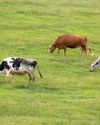
Africa goes from net carbon sink to source
New research shows Africa's impact on greenhouse gases and the need to focus on climate-smart agriculture
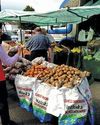
Ireland potato farmers unable to complete planting
Irish potato farmers have reported a delay in harvest and said that the UK might have to prepare for shortages of the produce. The shortfall is due to extreme wet weather during their planting season.
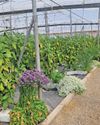
Zero-residue fresh produce a reality
Retail giants are calling for caution when using biologicals and chemical pesticides,

Big boost for mohair producers in Eastern Cape
A collaboration between the Eastern Cape Development Corporation (ECDC) and the Mohair Empowerment Trust (MET) has resulted in a R1,4 million injection into four emerging Angora goat farming operations in the Eastern Cape.
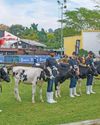
KZN Youth Show at Roval Agricultural Exhibition
The KZN Youth Show will run from Friday, 24 May to Sunday, 26 May at the Royal Showgrounds in Pietermaritzburg.
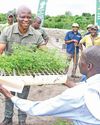
Hemp permits and irrigation system handed over
In an effort to fast-track the entry of rural farmers into the cannabis and hemp industries, KwaZuluNatal Minister for Agriculture and Rural Development, Super Zuma, visited the Shukasibheme Project in Mbazwana, a co-operative in Mseleni, uMhlabuyalingana in the Umkhanyakude District, to hand over cannabis and hemp permits as well as a borehole and irrigation system.

Meet some of the heroes behind avitourism destinations
Exploring what the Garden Route offers birdwatchers, Brian Berkman discovers some special people who run hospitable places to meet and see a variety of species.
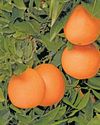
What the Citrus Academy offers aspiring producers
Cobus du Plessis takes a look at the Citrus Growers' Association of Southern Africa's Citrus Academy and how it is helping to develop aspiring farmers in the sector.

Natural-born killers of the insect world
The Myrmeleontidae family of lacewings from the Neuroptera order of insects consists of about 2 000 species of which 125 are found in South Africa.
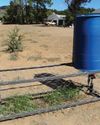
Seeder kick-starts vegetation in challenging environments
Dr George Craven of Noorspoort, Steytlerville, in the south-eastern Karoo, is successfully using a home-built 'bedstead seeder' to re-establish veld plants in an arid area, writes Roelof Bezuidenhout.